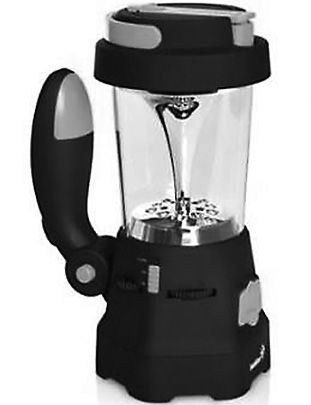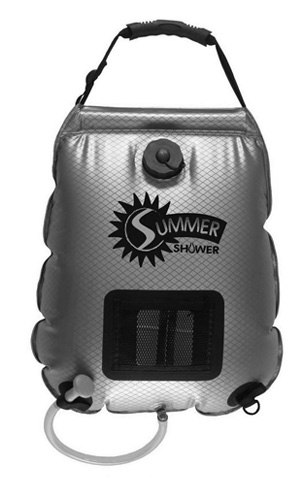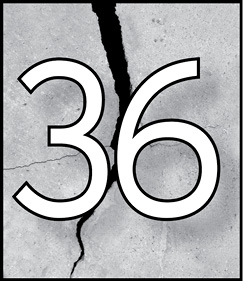
Heating, Cooking, Lighting, and Refrigeration
Five Things You Can Do Now
- Stockpile fuel for an existing heat source. If possible, acquire enough for the winter season.
- Decide on an alternate heat source for your home—at the minimum, a way to heat one room. Obtain adequate fuel.
- Purchase a Dutch oven and try it out. Purchase a Dutch oven cookbook or gather recipes online. Store unused briquettes in a plastic tub.
- Try cooking using solar energy. Experiment with different solar-cooker designs.
- Research different options for emergency lighting, then decide which kind of nonelectric lighting you want to purchase. Become familiar with how to use it and purchase any batteries or solar panels needed.
Energy is a critical concern for survival during crises. It will be in short supply during an extended power outage or prolonged disruption of distribution channels.
If you live in a cold climate, you could be faced with trying to heat your home without the benefit of natural gas, fuel oil, or electricity. Wherever you live, it could be a challenge to cook food and light your home at night. The list of appliances requiring electricity is extensive. While some are conveniences, others, like refrigerators, hot-water heaters, and radios, are more essential.
You will need contingency plans for energy shortages or if energy sources are nonexistent. This area of preparedness can be very complex. Your plans will depend on your circumstances, desires, and perceived needs. Although a camp stove with a small supply of fuel and battery-powered lights may be sufficient for short-term emergencies, complete energy independence will require much more extensive planning and preparation.
This chapter covers possible alternative methods of heating, cooking, and lighting. You will have to decide how extensive your preparedness needs to be, but you should have at least one backup method for each energy need. Redundancy is always desirable, so two or three methods are even better.
Heating with Wood or Coal
First, assess what your situation would be if your normal heating system failed. Realize that most modern systems operate on things—like thermostats, fans, blowers, fuel injectors, and ignition switches—that require electricity. Also, in a home with little or no heat, the water pipes in the home may be at risk for freezing.
Wood- and Coal-Burning Stoves
One potential solution for heating large areas in a home during a crisis is an airtight woodstove or coal stove/furnace. Wood and coal heaters have an advantage in a prolonged crisis because they do not rely on the power grid or gas utilities. Wood-burning stoves are common primary and secondary heat sources in parts of the United States where wood fuel is inexpensive and easy to obtain. In 2015, the EPA passed strict regulations on wood-burning heaters, and new stoves were required to meet these standards.
Coal is no longer a common fuel for heating homes and is used primarily in rural areas in states where anthracite coal is mined. Over half the homes that burn coal are in Pennsylvania. Despite its lack of popularity, a coal stove is a good heat source.
Both wood and coal are readily available in many areas of the United States and could be legitimate sources for heat. With forethought and planning, they could be stockpiled in every part of the country. Whether you choose an alternative heat source that burns wood or one that burns coal will depend on your preferences, the local restrictions, and which fuel you can more easily obtain.
Comparing Wood and Coal
Modern wood- or coal stoves burn with up to 85 percent efficiency. Historically, the Franklin Stove, designed by Benjamin Franklin and later improved upon, burned at only 35 to 45 percent efficiency. Coal burns about twice as hot as wood and requires a firebox made to withstand higher temperatures. A coal stove is built differently than a woodstove is, with a heavier bottom and a grate where the coal is burned.
If you are trying to decide between the two, you will find convincing arguments for both. Coal-stove supporters like that the stoves burn hotter and that the fuel is denser and takes up about half the space of wood for the same amount of energy.
Coal stoves, however, are dusty and sooty. They emit an unpleasant smell and contaminate the air with sulfur dioxide and other pollutants.
Woodstove advocates like the warming, radiant heat wood-burning stoves give off. They are economical and can be less expensive than fossil fuels. Today’s woodstoves are more efficient and less polluting. Keep in mind that if you procure your own wood, you’ll need tools for splitting and chopping.
Personally Speaking
When Jack and I built our first home, we decided we needed a backup heat source to our gas furnace. We did our research and ended up going with a Lopi fireplace insert installed on a concrete-and-brick hearth in our living room. It was amazing how much heat that little stove could put out. It heated our entire main floor and all the bedrooms on the top floor. In fact, we ended up closing the bedroom doors so the bedrooms would not get too warm for comfortable sleeping.
Combination Coal and Woodstoves
Wood- and coal stoves are not generally interchangeable. As mentioned, coal burns too hot for the typical woodstove. However, you can get hybrid stoves and furnaces designed to burn either fuel. Combination stoves for wood and coal are not as efficient at burning as either of the single-fuel stoves. A dual-fuel stove should have an interchangeable grate, a removable liner, an ashpan, and a larger draft opening than found on woodstoves.
Multifuel Stoves
Multifuel furnaces that use fossil fuels like gas, oil, or propane combined with a wood/coal capacity allow you to use regular fuel until it becomes necessary to switch over.
Another option is a wood/coal forced-air furnace that can be used as your regular heat source. Or you could consider a wood/coal furnace or stove that could be connected to the regular heat ducts in your home to serve as a backup. Or you could install a wood/coal boiler furnace for hot-water or steam heating.
Pellet Stoves
Pellet stoves are an especially efficient, clean, and good source of heat. Their downside is that they only burn pellets, which can be expensive if you must buy them from a retail store. If you can purchase them directly from a local manufacturer, this alternative source of heating may be worth considering. But you will need to store a sizeable number of bags of pellets, since they may be difficult to obtain in a prolonged crisis. They also require electricity to function, which makes them vulnerable if the power grid fails, so consider having a back-up generator.
Personally Speaking
We have a pellet stove, and we love it! It produces a warm, radiant, comforting heat, and my husband Craig chose it because it is much cleaner and much more convenient than burning wood in a woodstove. It is thermostat controlled and supplements our gas furnace and keeps the entire basement warm—and during winter in Utah, that’s hard to do! The stove is located at the bottom of the stairs, so some of the heat rises to the next floor—we turn on the fan in our central heating system to distribute the heat. We go through about two tons of pellets a winter and figure it saves us about half on our heating bill. Of course, a major drawback from a short-term survival point of view is that it needs electricity to work, but a gas generator solves that problem. We know that for a long-term survival situation, gas for the generator and the pellets themselves will be hard to come by—but we are working to come up with a solution for that!
Fireplaces
Fireplaces are more aesthetic than functional, with typical efficiencies of less than 10 percent to about 20 percent. Heat exchangers help somewhat. If you want a fireplace with a higher efficiency, look for an EPA-certified high-efficiency fireplace. Using a fireplace insert can raise the efficiency to the 70 percent range, but it will look much like a stove.
Heating Precautions
Preventing Chimney Fires
It is important to maintain your chimney. Over time, creosote can build up in the interior of the chimney and eventually lead to a chimney fire. Burning unseasoned wood, restricted airflow, or cooler than normal chimneys can all contribute to creosote buildup. Burn wood that burns hot—hardwoods burn the hottest and make the best firewood. But if you have access to an evergreen forest, try to select Douglas fir, larch, and lodge-pole pine and avoid more pitchy woods. Burn long enough to get a good, hot airflow up the chimney to prevent condensation.
Stove Safety
Table 36.1
|
|
|
|
Whichever stove you get, be sure to install it on a solid masonry foundation and with a wall shield. Take precautions to prevent children from accidentally burning themselves. Table 36.1 lists tools for taking care of your stove. You will also need proper tools for cleaning the chimney.
A stove thermometer can help you gauge how hot the fire is burning so you’ll know when to adjust the damper.
Other Heating Fuels
Oil Stove
An oil stove can be used to heat a home with radiant heat and without electricity. You can also store a large quantity of fuel oil for an oil stove, but in an extended crisis, once the fuel is used up, you may find it difficult to obtain oil.
Kerosene Heaters
If you live in a centrally-heated apartment building or only need moderate heating for the short term, consider a highly efficient pressurized kerosene heater. There are many models to choose from. You will need to store sufficient amounts of kerosene. Also, be sure to follow all safety precautions listed by the manufacturer.
Any type of fuel burning will use up oxygen and release poisonous carbon monoxide. Misusing a kerosene heater could lead to asphyxiation. To prevent a dangerous buildup of gases or a depletion of oxygen, heaters should not be used in a confined space but in well-ventilated areas with an outside air source, such as a partially opened window. Select a well-vented heater with a built-in oxygen sensor.
Make sure your heater is UL-approved and that you’re using the proper grade of kerosene. Rinnai and Suburban make similar heaters that use propane or natural gas. White gas and propane can also be used in flameless catalytic heaters.
Catalytic Heaters
Catalytic heaters convert fuel, primarily propane, to warm, infrared heat. There are no open flames, and if in good working order, combustion is nearly 100 percent, eliminating the potential for carbon-monoxide poisoning. However, because they deplete oxygen, venting is necessary. They are effective at heating small spaces but require storing the appropriate fuel. Look for a catalytic heater that comes with a low-oxygen sensor and shuts off if knocked over.
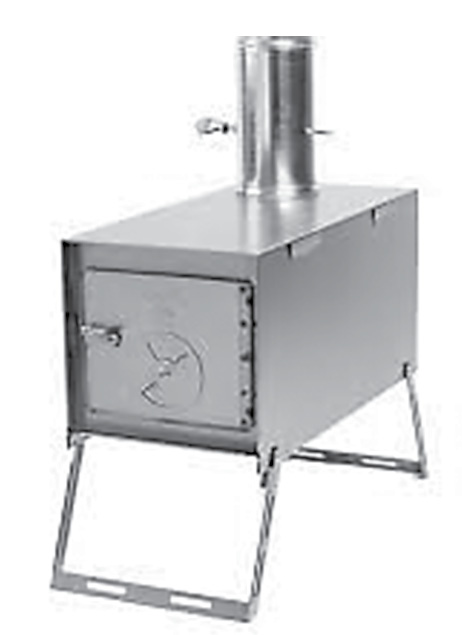
Sheepherder Stove with Pipe
One last option is the time-honored, wood-burning sheepherder stove with pipe. Made from sheet metal, it is heavy but portable, gives off a good quantity of heat, and can be used to heat a tent, cabin, or similar structure. Cooking can be done on its top. The one pictured is the Alaska Jr. Deluxe stove by Kni-Co Manufacturing.
Survival Cooking
To begin with, if you have a gas range or oven, you need to know it still works when the power is off. You will need matches or a lighter to ignite the gas since the igniters are electric. That way, even if the power is out, you’ll be able to cook a meal.
To be prepared for crises, you may want an alternative cooking source. Off-grid cookstoves use wood, kerosene, or propane. These stoves are quite sophisticated and used extensively by the Amish.
Wood-Burning Cookstove
A wood-burning stove with a flat top will usually get hot enough to allow you to do minimal cooking. A wood-burning cookstove provides a cooking surface and an oven. It may have an optional water reservoir or jacket, called a waterfront, that will heat water as it cooks. The water reservoir can be connected directly to your home’s plumbing system. This type of stove will need a reinforced floor under it. A double-wall construction will help keep the kitchen cooler in summer. Lehman’s in Dalton, Ohio, sells woodstoves and other useful off-grid appliances. Obadiah’s Woodstoves in Kalispell, Montana, specializes in wood-burning stoves and stoves using other fuels.
The Challenges of Cooking on a Wood- or Coal Stove
Table 36.2
|
|
|
|
Cooking and baking with wood or coal are very different from cooking with gas or electricity. It is much harder to regulate the temperature, and you’ll need to learn the nuances of attending to the fuel. You will also need to learn how to use trivets to raise and adjust pans on a too-hot stovetop. Also, using and caring for cast-iron pots and pans takes some adjustment. Table 36.2 lists the tools you’ll need for cooking on a woodstove.
Kerosene or Propane Cookstove
While a kerosene stove is much like a wood-burning stove in design and function, propane stoves have a more modern appearance. Both types require a reserve of fuel for a long crisis. Unique Off-Grid Appliances in Ontario, Canada, specializes in propane appliances.
Cooking with Fireplaces
Although it’s possible to cook in a fireplace, it’s challenging. The best way is to have a swinging arm crane or fixed bar and chains to hang cast-iron pots from. Tongs and a long ladle also help. Use a Dutch oven for baking and cast-iron pans and griddles for stewing and frying. A fireplace grate will work if there is nothing else.
Rocket Stoves
Rocket stoves are outdoor stoves that use small pieces of wood, sticks, twigs, and other biomass for fuel. They burn efficiently, produce very little smoke, and can be used for cooking, boiling water, and heating space. They must be vented properly if they are used in an enclosed space. Rocket stoves come in a variety of designs and sizes, but all have the common features of a fuel chamber, a stovepipe or chimney, and an outer insulation chamber. Rocket stoves are commercially available and can also be made following DIY designs.
Camping Stoves
Portable camping stoves that use propane, butane, white gas, alcohol, or kerosene are less-permanent alternatives. Two or three burners are adequate for an average family. Coleman makes a small oven that fits on top of a burner for baking. The obvious disadvantage to these stoves is that they depend entirely on stored fuel.

Heavy-Duty Outdoor Cookers
Camp Chef makes a heavy-duty outdoor cooker, affectionately known as a Cache Cooker (it was invented in Cache County, Utah). The one pictured is the Explorer Two-Burner. These stoves are high-BTU propane camp stoves that sit on sturdy legs, have two or three burners, and are capable of heating large pots and large grills or griddles. They can be folded up and come with a carrying case. People like to use them at tail-gate parties, hunting camps, and large group cookouts. In a crisis, they could be used to cook food for a big group. They need a source of propane fuel.
Personally Speaking
I learned about the Cache Cooker when I married Craig. I was amazed when he cooked corn for over 1,500 people at the annual Ag Day Barbecue at Utah State University using two cache cookers and large enamel canning pots. He’s also used them to cook breakfast for hungry Boy Scouts and for church parties and family reunions. In disaster situations, Cache Cookers could be used to feed a neighborhood of hungry people. They would also be great for heating large quantities of water.
Short-term Cooking Sources
Stoves using canned heat (e.g., Sterno), heat tabs, or fuel bars are strictly for short-term emergencies and are useful for bringing water to a boil or for warming small quantities of food. They have very limited cooking ability. Charcoal burners or barbecue grills have much higher heat output and more capabilities but should only be used outdoors where there is adequate ventilation.
Backpacking Stoves
Backpacking stoves are designed for one or two people. They can be used for both recreation and preparedness and are a good option because they are small and easy to transport.
Personally Speaking
When it comes to personal stoves, the backpackers I know all have their favorites. Most of them care about how compact and lightweight a stove is, how easy it is to light and operate, and how efficiently and quickly it will heat up water. They also pay attention to stream-lined design and extra features like a built-in screen to disperse any wind and an integrated cooking pot. On the downside, backpacking stoves may require specialized fuel and aren’t very useful for bigger groups.
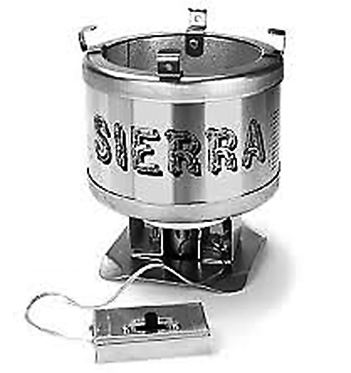
Biofuel Stoves
Sierra Zip Stove
The portable Sierra Zip Stove burns about any solid fuel: e.g., twigs, bark, pine cones, scrap wood, and charcoal. It weighs less than a pound and uses a single AA battery for its blower
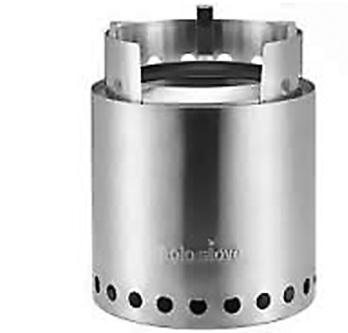
Solo Stove
The Solo Stove is an innovative, extremely efficient wood-burning outdoor stove, its design simple and elegant (see picture). It burns twigs, pine cones, sticks, etc. Models range from a small portable backpacking stove to a large backyard firepit. Cooking pots and other accessories for it are available.
Solar Cookers
Solar cookers, limited to midday cooking on sunny days, are a good option, especially if you live in a sunny climate. Two solar cookers to consider are the All American Sun Oven and the GoSun Solar Cooker.
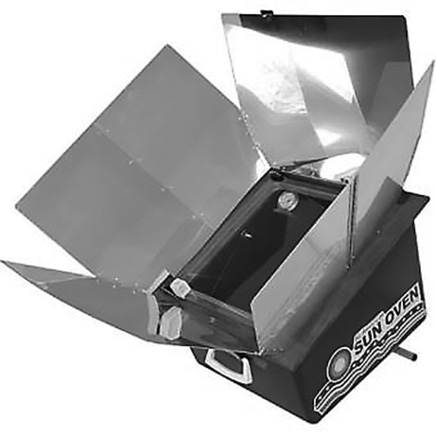
Sun Oven
The Sun Oven (pictured) uses shiny reflective panels to direct sunlight into a cooking chamber. It will bake, boil, and steam food. It can also be used to purify water, dehydrate foods, and rehydrate freeze-dried and dehydrated foods.

GoSun Solar Cooker
The GoSun Solar Cooker works by placing a tray of food inside a vacuum tube surrounded by compound parabolic reflectors. This solar cooker will steam, bake, roast, and even fry. It comes in several versions that feed from two to fifty people.
Personally Speaking
I taught fifth- and sixth-grade science for twelve years. For a culminating activity in the unit on heat, I had my students design and build their own solar cookers. They worked in teams and were given aluminum foil, cardboard, masking tape, and Styrofoam plates. For an extra challenge, we often tried the cookers out on a sunny day in the middle of winter when there was snow on the ground. Most of them could successfully bake a few apple slices, melt chocolate, and roast a marshmallow. Since then, I have noticed that there are many plans online with directions for making sophisticated solar ovens. They all work on the same principle of reflecting and focusing sunlight to cook food. I encourage you to have some fun experimenting with them.
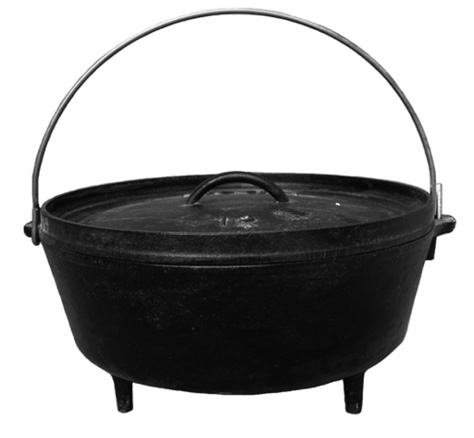
Dutch-oven Cooking
Dutch-oven cooking is fun and a good example of how you can combine family recreation with preparedness. You can find Dutch-oven cook-offs in many parts of the country—and the dishes can be quite tempting and delicious. There are also plenty of experts who share their knowledge in recipe books and online.
Cast-iron Dutch ovens come in several sizes. Ten-inch and twelve-inch are about right for a family, but there are larger sizes for bigger groups. They can be used on an open fire, but you’ll get more consistent results if you use charcoal briquettes. You can increase these ovens’ efficiency by using them along with a reflector oven. Dutch ovens can be stacked to cook several dishes at a time and to make the best use of the briquettes.
Table 36.3
|
|
|
300° = 400° = |
12—15 coals 13—17 coals |
Outdoor or camp Dutch ovens should have three legs to allow for stacking and heat circulation. They should have a flat lid with a lip for holding coals and a firm wire handle for lifting. You may also want a charcoal chimney lighter, a lid lifter, and heavy leather work gloves. A tripod is nice for hanging the pot over a campfire. And, of course, you’ll need to store plenty of charcoal briquettes if you plan to use them. Table 36.3 shows you how many briquettes you need. Store bags of briquettes in large plastic storage bins.
Cast-Aluminum Dutch Ovens
Dutch ovens made of cast aluminum don’t rust, weigh and cost less than traditional cast-iron ovens, and work much the same as cast iron but heat up more quickly, retain heat a little less longer, and can be washed in the dishwasher. Although it isn’t necessary to season cast-aluminum pots, like cast-iron, seasoning them will make food less likely to stick. (Don’t wash seasoned pots in the dishwasher!)
Off-Grid Lighting
A light source can be indispensable, especially for emergency repairs, caring for the ill, and calming frightened children. It also extends the functional hours in the day, particularly during winter.
Battery-Powered Lamps
Flashlights and battery-powered lanterns are obvious choices for quick, always-ready portable lighting. Their obvious limitation is battery life. Solar-powered and rechargeable batteries help solve this problem. Store spare bulbs and batteries for flashlights and lanterns.
Rechargeable Batteries
NiMH (nickel-metal hydroxide) rechargeable batteries are newer technology and have replaced NiCd (nickel-cadmium) batteries. They have two to three times more energy capacity and are most often sold as AA or AAA batteries. They are less likely to develop memory effect, and they gradually lose their energy capacity. They are also more environmentally friendly since they are not made with heavy metals.
Lithium-ion or Li-ion are the standard in portable batteries and are most often used in consumer electronics. They have a high energy density, a low-memory effect, and weigh less than NiMH batteries. They are, however, significantly more expensive, and they can’t be substituted for regular D-cell batteries. The efficiency of new Lithium batteries continues to improve.
Solar-Powered Battery Chargers
A multivolt solar array can be used to charge batteries or power small radios, flashlights, and cell phone chargers, etc. Lights, radios, and cell-phone chargers that come with their own solar cells and built-in chargers are also handy.
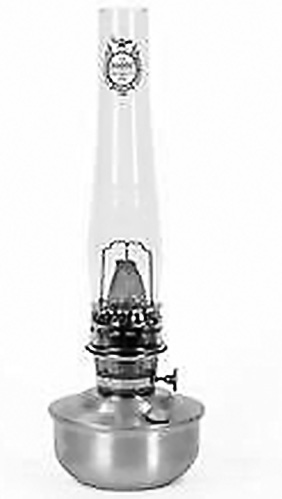
Kerosene Lamps
For situations without electricity, Aladdin kerosene lamps are unsurpassed when it comes to nonelectrical lamps. They have a round wick, compared to other lamps with a flat wick, they give off a white light equivalent to a sixty-watt light bulb, and they burn silently with minimal odor for forty-eight hours on a gallon of kerosene. They also give off a small amount of heat.
You can purchase them equipped for electric light bulbs with a conversion kit to adapt them to kerosene when needed. The Aladdin MAXbrite 500 is their most recent update. It’s important to store extra mantles, wicks, chimneys, flame spreaders, and a selection of spare parts.
Personally Speaking
The electric conversion Aladdin lamp we purchased over thirty years ago sits on a dresser in our guest room. It has a beautiful classic, white shade and brass base, its light soft and subtle. We have stored parts we need to convert it to a kerosene lamp.
Gas Lamps
Propane lamps and white-gas lanterns are brighter than kerosene lamps but hiss and flare when burning. They give off light equivalent to about 100 to 120 watts for the single mantle and 150 to 200 watts for the double. They’re not recommended for use indoors because of their carbon-monoxide emissions.
A gallon of propane or white gas will burn about forty hours in a single-mantel lamp and about thirty in a double. White gas is more dangerous because it is liquid and can be spilled, while propane is pressurized and enclosed. Be sure to store extra mantles.
Cheaper wick and hurricane lamps are often used for nostalgic decorations. These lamps are not desirable for preparedness because they are much less efficient. They give off an amber light and are only about 10 percent as bright as an Aladdin lamp.
Candles
Candles are useful primarily for short-term emergencies. Although they do give off enough light for some activities and a small amount of heat, their open flame is dangerous. Still, they are safe and easy to store, so keep a supply of them, but do not rely on them as your main light source. Candles come in a variety of shapes and sizes. Some have two or three wicks to give off more light and make efficient use of the wax. The burn time of a candle depends on its size, the kind of wax used, the wick size, and the number of wicks.
It is easier to store actual candles, but if you plan to make them, you should store paraffin, wicking, and molds. You may also want a supply of candle holders or lanterns.
Other Nice-to-Have Backup Light Sources
Light Sticks
The light in glow sticks is made when two chemicals unite and form a temporary chemical glow lasting several hours. Often used to keep kids entertained, glow sticks add another layer of light to the environment. They can also be used to identify hazards, keep track of children, keep a group together, mark a trail, signal for help, or create a perimeter alarm. Select a quality grade rather than an inexpensive toy version. Several are described in chapter 33.
Kinetic Flashlights
Also known as Faraday or shake flashlights, these flashlights are activated by shaking or flipping them back and forth. Look for ones with a ratio of low shake time to a high light time. You should be able to find flashlights with a ratio of 30 seconds of motion to 15 minutes of light or more. You generally get what you pay for, so look for a quality brand. A carabiner clip and waterproofing are also nice features.
Small LED flashlights
Small LED flashlights come various styles and shapes. For easy access, keep these ready-to-go flashlights in bedside drawers, in kitchen utility drawers, near every outside door, in emergency evacuation kits, and in vehicle glove compartments. Hanging hooks and magnets are nice features.
Hand-cranked Lights
A minute of cranking can offer twenty minutes of light. There are several choices. The one pictured is made by Ivation.
Head Lamps
LED headlamps allow you to use both hands instead of just one. One creative use is to strap it onto a water-filled gallon milk carton with the light facing inward so the light diffuses and makes a glowing ball of light.
Off-Grid Hot Water and Refrigeration
Hot Water
Hot water is useful for bathing, cleaning clothes, and washing dishes. Water may be heated in large pots using your wood- or coal stove or even over an open fire, but there are better methods if you plan for them now.
Solar Water Heaters
A credible option for heating the water you use in your home, solar water heaters can cut hot water costs significantly as well as offer hot water when other power sources fail. These systems include solar collectors and storage tanks. With some effort, solar panels can be fitted to use with existing water heaters.
ENERGY STAR certifies efficient solar water-heating systems. Most of the time the systems are designed to be used with an electric or gas water heater as backup. There are both active and passive systems. Both systems require a backup system for cloudy days.
Portable Hot Water Devices
For portable hot water, you might use a camp shower that is simply a sturdy black bag or black PVC container that you fill with water and place in the sun. They hold five to ten gallons of water. Expect to pay twenty to fifty dollars, depending on size and features. The one pictured is the Advanced Elements Summer Solar Shower.
Portable Propane Water Heaters
Portable propane water heaters and showers consist of a propane-fueled water heater connected to a shower nozzle. They are recommended for outdoor use only. Camp Chef, Ditsli, EccoTemp, and Zodi are among the most recognized brands. The price for these water heaters starts around a hundred dollars. You will need to store propane to use them.
Wood-Fired Water Heater
Lehman’s wood-burning stove can do double duty as a water heater if jacketed and equipped with a coil of metal tubing around and through the firebox. It is also possible to make a wood-fired water heater out of an old gas one by welding a firebox to the bottom. Be sure to install a temperature gauge and pressure-relief valve, available at hardware or building-supply stores.
Refrigeration
Most of us would miss the convenience of refrigeration in an emergency without electricity. However, refrigerators and freezers can be powered by sources other than electricity. Dometic offers the Servel Americana series dual-electric-LP gas or kerosene refrigerator-freezer. These can also be converted to butane or natural gas.
Lehman’s Frostek freezer uses LP gas, kerosene, or propane. There are other refrigerator/freezers made for the RV and marine markets that operate on electricity or LP gas, including the Explorer, Novakool, and Norcold brands. SunFrost, Solarfridge, and Polartech refrigerators use one-fourth the usual electricity.
Spare Parts
While you are planning for alternate energy sources, be aware that the equipment can break down—often at the least opportune time. Be sure to keep your alternative-energy appliances in good working order. Assess the needs of your equipment and store a supply of spare parts so you can at least fix the most common repairs.
